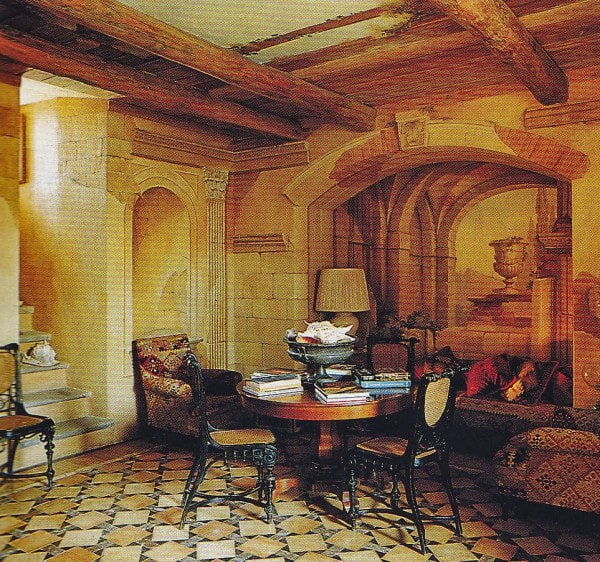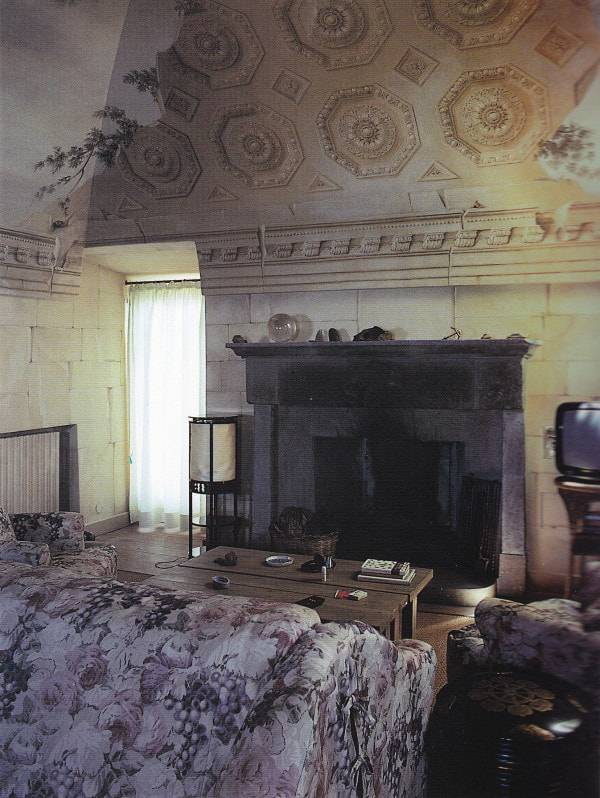|
Elsa Peretti danced the night away at Manhattan's Studio 54 during her days as a top fashion model. But she also is a jewelry designer and philanthropist. A lover of architecture, she is also largely responsible for the restoration of the village of Sant Martí Vell in Catalonia, Spain. Through her foundations, she supports a wide variety of cultural, social, and artistic causes. One of her more artistic endeavors proved to be a real challenge... Peretti's La Torre was a ruin of a watchtower on the steep and craggy cliffs of Southern Tuscany--it was hardly a typical beachfront villa. Built by Spanish invaders in the 16th-century as a military lookout between the Tuscan archipelago and the island of Corsica, its remote setting appealed to Peretti but its decrepit condition was daunting. The tower contained awkward, spartan interiors with thick stone walls, cell-like rooms and thin slits as windows. Milanese architect Renzo Mongiardino helped change all that. The design could go take one of two possible paths: honoring the structure and its spartan shapes with whitewashed walls, simple wooden furniture and mattresses on the floor, or creating a three-dimensional fairy tale tower with tromp l’oeil effects. One of the main features is a fireplace mantle created by a copy of a gaping, monstrous mouth, inspired by the sculptures found at the 16th-century Bomarzo Garden of Monsters. Tromp l’oeil columns, pediments, and vines emphasize the fairy-tale-like quality of the tower, taking it back into the 17th century. Some of the effects include distorting perspective to make the spaces appear more spacious than they actually are. Mongiardino designed the tower sitting room as a “Roman ruin” with trompe l’oeil coffered ceiling opening to sky. The patterned floor incorporates terra-cotta, wood and marble. The influence of Bomarzo Gardens is obvious
9 Comments
A sgabello is a type of chair (sedia) of hieratic significance popular during the Renaissance. Sgabelli were typically made of walnut and included a variety of bas relief carvings. The legs could be either two decorated boards with a stretcher for support, or three separate ornamented and carved impost legs. This seat was often placed in hallways, carved with a family's imprese or emblem drawn from its coat-of-arms. Its primary purpose was decorative, therefore the seat was not necessarily comfortable. Similar chairs were made in France. Nowadays, they are used as an accent piece in interior design and period pieces can be worth a small fortune.
|
On Amazon:
|















 RSS Feed
RSS Feed
